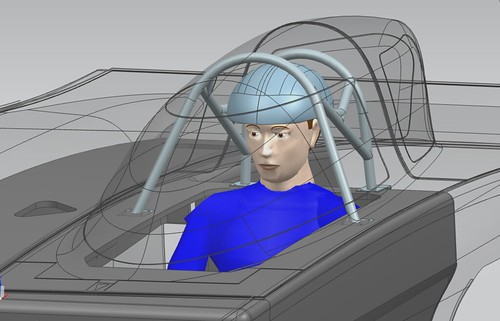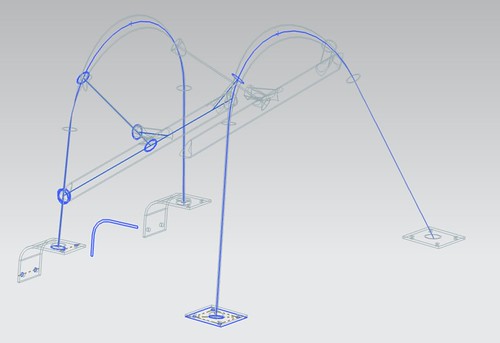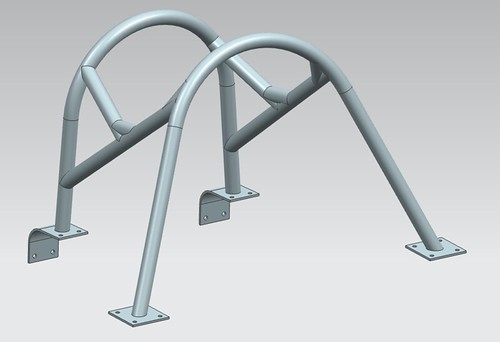Corporate
Meet University of Michigan Student Engineer Garrett Simard
The University of Michigan is finishing up the World Solar Challenge and like any good real-world student project, they've experience interesting challenges along the way. We’ll share more about the ...
The University of Michigan is finishing up the World Solar Challenge and like any good real-world student project, they’ve experience interesting challenges along the way. We’ll share more about the race challenges soon. In the meantime, I’d like you meet one of their team members who can share the mechanical engineering challenges in solar car design.
Garrett Simard is the lead mechanical engineer on the University of Michigan’s solar car team.
Tell us about yourself. What got you interested in engineering?
“I’ve always been interested in the STEM side of things, in high school I went to a magnet school for math and science. I went in to college thinking I wanted to be material science engineer due to the fantastic AP chemistry class I had but after experiencing college organic chemistry I realized that it wasn’t for me. Around that time I had started going to meetings for the Solar Car Team. I had found out about it at a fall activities event showcasing student groups almost around campus. The first division I went to meetings for was the strategy division. I was fascinated at the idea of car wide mathematics models after competing in math competitions in high school. I also started going to the mechanical meetings because I liked working with my hands. Andrew Hwang was the interim mechanical lead and showed me how to maintain the 2009 car, how to analyze parts for structural integrity, and how to design parts in another CAD system (while lamenting how he wished the team used NX!). I loved the work I was doing there, and jumped ship from the strategy division to full-time mechanical and declared into the major soon after.”
What is your role as lead mechanical engineer on the U-M Solar Car team? How did you find out about the project?
“My role as mechanical lead during the design cycle mainly consisted of three things: making sure the car was safe, making sure everything fit together inter and intra-mechanically and training new recruits how to use our software suite, including the recently transition to NX 8.0. The beginning of the semester was truly a challenge for me. As one of a couple returning mechanical members but with only a year’s worth of technical knowledge, I had to stay one step ahead of the rest of my division to ensure I’m always in a position to answer their questions. This included NX. I was still new to the software so I spent many nights with the online software training myself, as well as just CADing files from the previous car for practice. After learning the basics of how NX handled sketching and assemblies almost every other feature I use I’ve learned from just experimentation.”

An NX image of the solar car roll cage
Tell us about the design process on Generation? What features of NX did you use most?
“Personally, I probably spent more time with assembly constraints than any other feature. I designed more and more later in the year (namely the roll cage and most of the steering system) but I had to spend most my time during design making sure everything fit properly. We didn’t have Teamcenter at the time and I know that would have made things a lot easier, but there were nights where the new chassis would come out as well as the new front suspension, and I would spend hours making sure in CAD we could move the tracking rod and see the wheels turn appropriately.”


What was it like machining the parts you designed?
“Machining parts designed by ourselves is, in my opinion, extremely gratifying. I started the summer with very little machining experience and had to go through over a month of training steps at our workspace, the Wilson Student Team Project Center. Now I have full access to CNC mills, lathes, a router and welding tools. I’m generally pretty clumsy with my hands, but being able to know that this thing I made is accurate to 5 thou, 1 thou, a few tenths for some holes gives me a sense of precision and control I can’t find with a dremel. Having gone through the process of idea, design, manufacture, test (sometimes all in a span of under an hour) countless times to make things work I can’t imagine how engineers who are not on real-world project teams learn to solve non-textbook problems.”
Were there any lessons learned on the recent mock race?
“On the mock race, it was the first time I really felt we were one team not a lot of separate divisions – we weren’t just testing the car we were testing the team. Mechanically we learned that some parts of the car were not as robust as we thought (the canopy opening mechanism broke day 2) but as a whole it was very successful in confirming a lot of our designs were sound. The main lesson learned was bring everything, we spent lots of time waiting for a spare component to be picked up from the workspace electrically. I spent hours one night trying to seat our motor tire because the one tire pump we brought broke and the air compressor decided that was a good night go die as well. We knew that over preparedness was better than being under prepared but didn’t quite yet know how hard missing something would be.”
What is your dream job after you graduate?
“Right now my dream job is to either be a structure or design engineer in the aviation or space industries. Almost everything we do (mass optimization, using the best materials, extended composite work) has direct ties in those industries and I like working on the leading edge of the engineering. After the race I’m almost immediately moving to Los Angeles for a seven-month SpaceX internship.”
Thanks for answering our questions Garrett. Good luck in your return from the outback and your new gig at SpaceX where I’m sure you’ll be honing even more skills on our software.
– Dora


